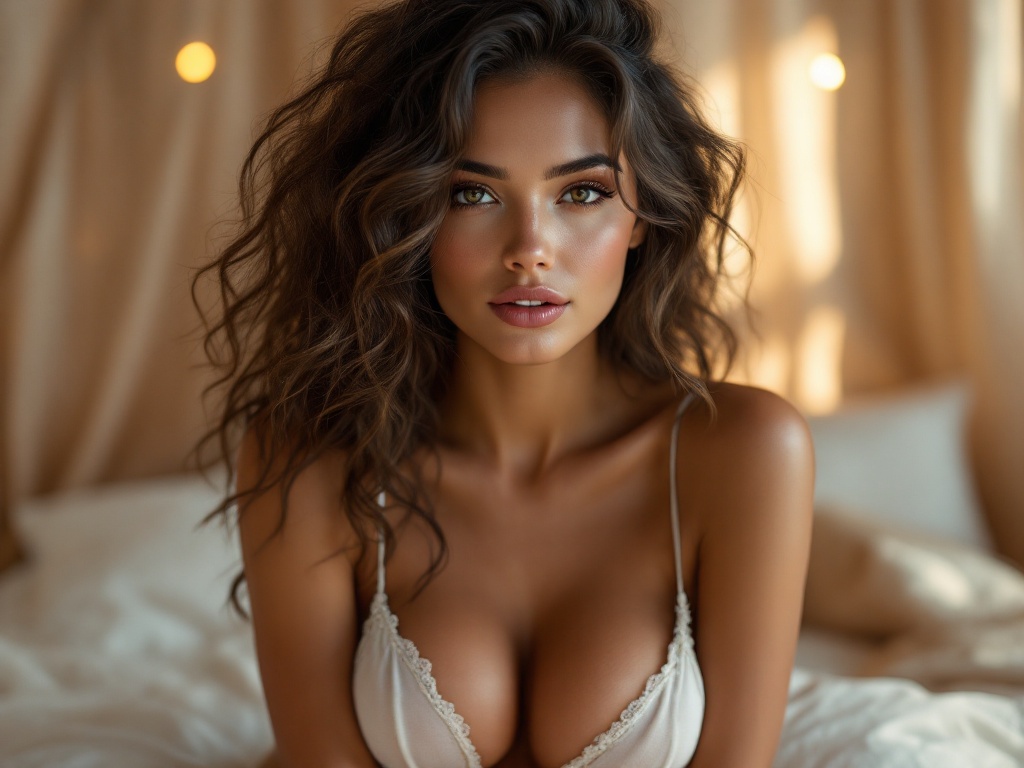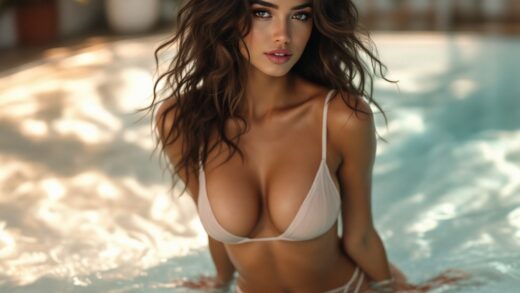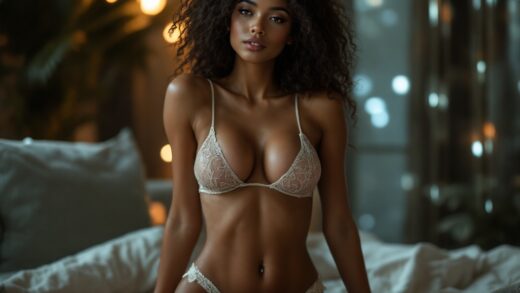The intricate interplay between art and technology has eternally sparked intrigue, with each continuously shaping the other’s trajectory in meaningful and compelling manners. In contemporary times, artificial intelligence (AI) has emerged as a formidable catalyst for change, particularly within the nuanced and occasionally contentious domain of erotic art. Artists are harnessing the power of AI to liberate themselves from traditional limitations, all while delving into new realms of creativity and expression. This groundbreaking convergence not only revolutionizes the portrayal of eroticism but also provokes critical discussions about authenticity, ethical considerations, and societal values. As DeepNude AI technologies become increasingly obtainable, they prompt us to revisit our definitions of erotic art and who holds the power to produce it. The allure of intertwining technology with erotic representation is igniting a cultural transformation, one that deserves thorough scrutiny.
Eroticism has historically found its expression through myriad artistic mediums, ranging from age-old sculptures to Renaissance masterpieces and cutting-edge modern installations. The way society perceives erotic themes has shifted dramatically through the ages, swinging between homage and suppression. An exploration of eroticism’s representation in art reveals that numerous factors, including cultural circumstances, have played a significant role in these transitions. Nevertheless, the prospective influence of AI within this context offers a remarkable opportunity to reevaluate and redefine these age-old motifs. It has become a vibrant arena for investigating intimacy, passion, and identity in ways previously thought unattainable. Emerging tools encapsulate nuances that confront established standards.
The Historical Context of Eroticism in Art
To truly comprehend the transformational effects of AI on the depiction of eroticism, one must first appreciate its historical backdrop. Art has served as a reflective surface for societal values, where erotic subjects often faced either glorification or condemnation, shaped by contemporary mindsets. From the bold displays of sexuality in ancient Roman frescoes to the more subtle nods found in Victorian artworks, the evolution of eroticism’s representation tells a vibrant story. Historically, societal attitudes towards such themes frequently dictated what was deemed acceptable, resulting in censorship and debates over specific artworks. Consequently, many creations disappeared from the public eye, while other pieces achieved infamy for their audacious portrayals. This intricate relationship between art and society establishes the groundwork for the conversations surrounding AI’s role in this narrative.

The Emergence of AI in Art Creation
Today, AI technologies stand at the forefront of contemporary art making, utilizing machine learning algorithms and generative art methods that expand the horizons of erotic expression. Renowned AI art platforms and applications empower artists to craft works that challenge the limits of imagination and reshape the viewer’s understanding of erotic themes. Platforms such as DeepArt, Artbreeder, and Runway ML illuminate pathways for individuals to explore their desires through the prism of AI-generated visual art. These tools not only simplify the artistic process but also enable creators to blend various styles and inspirations drawn from existing masterpieces. The benefits of employing AI extend beyond mere creativity; they foster collaboration among artists and ignite a spirit of experimentation. Yet, an important question lingers: will these instruments fundamentally transform the core essence of erotic art?
| AI Tool | Features | Application for Erotic Art |
|---|---|---|
| DeepArt | Transfers styles from well-known artworks | Crafts distinctive erotic themes by merging differing styles |
| Artbreeder | Merge images and adjust parameters | Creates novel interpretations of erotic visuals |
| Runway ML | Offers various AI models | Enables interactive installations with audience involvement |
New Perspectives on Eroticism Through AI
The application of AI in art brings about fresh viewpoints on erotic visuals that may have, until now, remained uncharted. AI algorithms possess the ability to scrutinize historical pieces and reimagine them through a contemporary lens, yielding original expressions that resonate with today’s audiences. This innovative perspective often emphasizes the subtleties and complexities surrounding eroticism, illuminating aspects like vulnerability, power dynamics, and emotional layers. Consequently, the democratization of erotic art-making through intuitive AI tools engages a broader audience, inviting numerous voices into a sphere that has traditionally been rather exclusive. This wider access not only enhances viewer involvement but also presents the risk of misrepresentation.
The Role of Cultural Context
Embedding cultural elements into AI-generated erotic art is vital for grasping the multifaceted nature of intimacy and desire. AI acts as a vessel through which diverse cultural influences can be both mirrored and interrogated. For example, the stylistic choices and subject matter within erotic artworks can vary immensely across cultures. Each culture comes equipped with its own narratives and preconceived notions regarding sexuality, and AI has the potential to shed light on these disparities. However, if AI is relied upon without input from culturally informed artists, it could result in oversimplifications or misconceptions. Thus, collaboration between technology and artists well-versed in cultural nuances is essential for genuine representation.

Ethical Implications and Controversies
The crossroad where AI meets erotic art also provokes significant ethical dilemmas that merit our attention. Issues surrounding consent, authorship, and copyright swirl in the creation of AI-generated works. Critics contend that erotic art emerging from AI may lack the same intent and emotional resonance as pieces crafted by human artists. Additionally, the potential for AI to perpetuate damaging stereotypes or exploit sensuality raises considerable concerns within the discourse on erotic representation. As this genre evolves, prioritizing ethical considerations becomes a necessity. Tackling these challenges demands thoughtful discussions among artists, technologists, and ethicists alike.
Future Trends in AI and Erotic Art
The horizon of erotic art in the age of AI is poised to ignite excitement and curiosity, filled with myriad possibilities. Projections indicate an expanding landscape wherein artists will persist in their exploration of AI technologies, leading to inventive depictions that defy conventional limits. Furthermore, as audiences grow increasingly savvy about AI’s potential, their expectations will transform as well. The incorporation of community feedback into AI learning frameworks could cultivate a more dynamic and responsive artistic environment, enriching the overall experience of erotic art. Ultimately, the course of this intersection will depend heavily on collaborative endeavors that ensure both creativity and ethical inquiries progress hand in hand.
Conclusion
AI is indisputably reshaping the portrayal of eroticism in art, instigating a conversation that challenges long-standing norms and broadens artistic horizons. As new technologies emerge, our perspectives on intimacy, sexuality, and desire will continually shift, allowing for bold explorations that encapsulate the complexities of human experience. Striking a harmonious balance between technological growth and ethical obligations is crucial as we navigate this evolving terrain. As artists experiment with AI, they redefine erotic representation and inspire viewers to engage with their own understandings of sexuality. This intricate interplay between technology and artistry ultimately forebodes a future bursting with diverse and richly textured expressions of eroticism.
FAQ
- What does AI contribute to the creation of erotic art?
AI provides artists with innovative tools to craft distinctive representations of erotic themes, enhancing creative expression through data analysis and machine learning. - Are there ethical issues related to AI-generated erotic art?
Absolutely, concerns arise regarding consent, authorship, and the risk of reinforcing harmful stereotypes. - Can AI effectively honor cultural contexts in erotic art?
While AI can analyze and incorporate cultural aspects, it needs precise programming and insights from knowledgeable cultural voices. - How does AI enhance the accessibility of erotic art?
AI democratizes the artistic process, empowering a wider audience to create and share erotic art without the need for extensive specialized skills. - What lies ahead for erotic art in conjunction with AI?
The future promises increasingly innovative and diverse representations as AI technology advances and artists continue to explore these pioneering tools.



